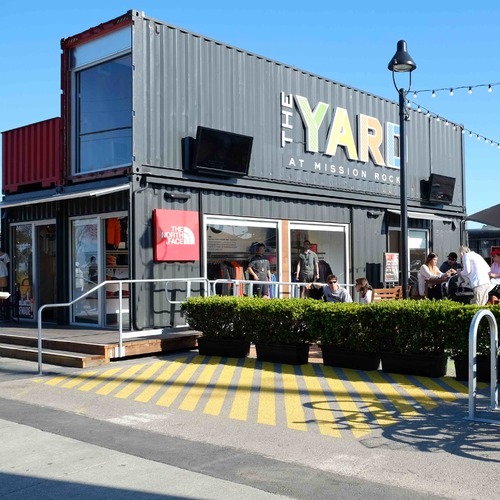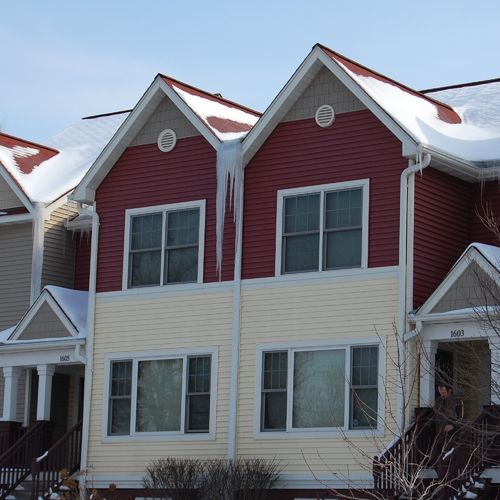One word: Waste.
It would be ridiculous to suggest that every house constructed in advance of the green-building boom is substandard, although some of them clearly are.
There are many New England farmhouses entering their third century of service that are still sound, even if they are a little drafty. There also are houses 10 or 20 years old that have serious structural problems caused by sloppy workmanship, inappropriate or substandard materials or both.
What’s really wrong with conventional building techniques is that they are often haphazard and wasteful. Houses built with too little forethought can be uncomfortable, expensive to heat and cool and ill suited to the site. Worse, they can be unhealthy places to live because of airborne mold, toxic chemical off-gassing and overall poor air quality.
Green building is an approach that helps designers, builders and all of the other trades that get involved. There are specific, measurable steps that builders can employ to make sure the house will reach its full potential for durability, comfort and efficiency.
Builders can be reluctant to try new things. That’s understandable, because they’re the ones left holding the bag when something doesn’t go right. But the practices and principles behind green building are now well enough understood that risks are minimal. The payoff can be very rewarding for both the builder and the homeowner.
More Info:
To learn more, see the Design and Planning
section of our Green Building Encyclopedia
Weekly Newsletter
Get building science and energy efficiency advice, plus special offers, in your inbox.











6 Comments
Construction Building Waste
I am a 3rd generation carpenter/cabinetmaker. My father told me when I was growing up that after building a house a good carpenter should be able to take his scrap away in a bushel basket. I understand in modern times that labor is more costly than materials, so rounding up all of your short cut-offs to use as fire blocking may not be economically feasible. I still think that changes should be made to limit building material waste from construction projects.
Dave Baal, Temecula, CA
Green Building and Waste
We need to remember that there are today and have always been builders who built "green". They care/cared about the homes they built and about the materials they used. There have always been and continue to be (even labeling themselves "green builders"), builders who build only for the profit.
The cost plus contract has created an opportunity to buy more materials (excess materials) in order to make a larger profit instead of encouraging builders to build a better home.
We need to rethink our construction habits and to focus on using an efficiency factor in building. If you use quality materials, you buy less. If you don't buy poor quality materials, then the demand for these materials will decrease and manufacturers will begin to supply better materials.
Incorporating this efficiency factor into building will keep costs in line, create a better built home, and create a profit margin that works for both the contractor and home buyer.
Bonnie Pickartz, Goshen Timber Frames, Franklin, NC
Green Building
I've been around long enough that a 'green builder' still means one who is new at the buisness. He's the one that will short-bid to get the job, then take shotcuts to get back off the job before he loses his shirt on labor. I also have seen the political winds blowing reason aside and public opinion in many different directions. Building materials have evolved and processes have followed. This is market driven. It would be silly to try to use every new thing on the market just because they exist. Similarly, it majkes no sense to build the old way if something newer will do a better job. There were bad builders 300 years ago, as there are now. Quality and appropriate application of materials and processes is something that will dissappear when untrianed workers are involved. They are also the ones that will not know how to work in an organized fashion. A good source of scrap.
In my area thee is a dumpster service tha recycles building materials. They can charge less than the landfilling services. I try not to waste much, but knowing they recycle over 80% of their loads means we can find some comfort - we are being responsible users of our nation's resources.
Building waste
I am not going to dispute the carpentry skill or building experience of the previous commenters.
But what they are not understanding is the way they have been building and the way most homes are still built today is flawed. Not because of the builders lack of skill or their caring about their work. You can have a other wise very well built house that is still using more solid lumber then it needs to less insulated then it should be. And designed in a way that it is way more structure then needed.
Even many so called green builders still build houses that are way larger then they need be. Sure due to being energy efficiency they may use less energy per sq. foot of space heated but they still use more energy and use more building material then people were truthful about just how much square footage do you NEED. Not WANT but NEED. a 3 to 4 member family can easily live in a 800-1000 sq. foot house yet the average new home built here in New England is 2500 sq. feet and many are over 4000 sq. feet and the and many of these large homes are built for 2 to 3 members families. These over sized homes with huge whirlpool tbs and multi-head showers and luxury kitchens and baths and walk-in closets the size of another bedroom waste more materials the what gets thrown in dumpsters especially when most waste removal companies (at least in my area) are recycling building waste to one degree or another.
I am not claiming that building waste is not a problem but more materials are used to build unneeded sq. footage that then needs to be heated ad cooled then is thrown in dumpsters even buy the most wasteful of builders.
Also the way we design and build homes using dimensional solid lumber and onsite cutting and assembling of materials and then sticking utilities inside that frame and then covering it with wall and ceiling finishes (mostly drywall) making it inaccessible without damaging those finishes is a century old. I respect craftsmanship as much as anyone and I myself am a skilled carpenter but it is time to look at alternative methods and materials to stick framing a and then covering that frame with sheathing and then retrofitting insulation onsite. Yes that's right why are we building essentially the same shell as 20 even 80 years ago in fact my own house is 250 years old and a brand new houses basic structure and design today is not that much different before you add the utilities and insulation then my home. (now my house has a post and beam frame and most new houses are platform framed using dimensional 2x framing but the basic shape and the next steps to add insulation and utilities to a new house and to retrofit those things into my 250 year old house (minus removing all the interior finish) is the same. I ask why??? Why. In the past 50 years has little changed yes many alternative methods are out there but they are not the norm across the industry.
And one more last comment if all of these home now in foreclosure and the currant banking crises had been basic needs homes built so the house itself was affordable and not made purchasable using dubious banking practices so people we not only put into homes they could no longer afford once true cost of and the shell game of loans fell apart. If instead homes were built and sold based on real home shelter needs builders would build smaller more affordable homes people could really afford and could afford to heat and cool. and think about the waste put into all those now empty developments. Builders actually built more sq. footage of living space then was needed not to meet a true demand for homes but to simple try and sell as many luxury homes as possible for higher and higher prices and they did it using interest only loans negative amortization loans, multi-loan 100% financing balloon payments and variable rate loans with built-in rate increase the banks knew the owners would not be able to payback. But they were gambling that the market would hold value (if not increase and they would just resell any foreclosed homes for even more profit and the loan makers did not care they sold the loans before the ink on the signatures was dry. The builders (or should I say developers) did not care they got their money they could care less if the new homeowners lost their new over sized home within 2 years.
What about that waste. Talk all you want about building green but most of what I see in the green boom is the same old builders that 2-5 years ago were building wasteful luxury homes repacking and remarking to capture new money in the trend toward green and most of it is just that re-branding. If being green means being energy efficient and using materials that are eco-friendly we also need to only build the amount of sq. footage of housing truly needed. That means smaller houses that live larger and house that you can heat with a candle (if you have any need for any heat at all) the zero energy home is not a fantasy it exists today homes highly insulated homes built from pre assembled and well insulated walls and roofs exist today utility systems that are excusable interiors that are modular and reusable exist.
how solid is if the house was built in 1950
I am looking for to buy a house, and the house was built in 1950, I would like to get your opions, wether I should buy a older house or newer house.
Thanks for your advise.
I think you are focusing on the wrong information
Anonymous,
To determine whether a house is well built or poorly built; or whether it has been well maintained or poorly maintained; or whether it is energy-efficient or an energy hog — requires more information than its date of construction. Knowing that a house was built in 1950 tells us very little.
It sounds like you should hire a home inspector to help answer your question.
Log in or create an account to post a comment.
Sign up Log in